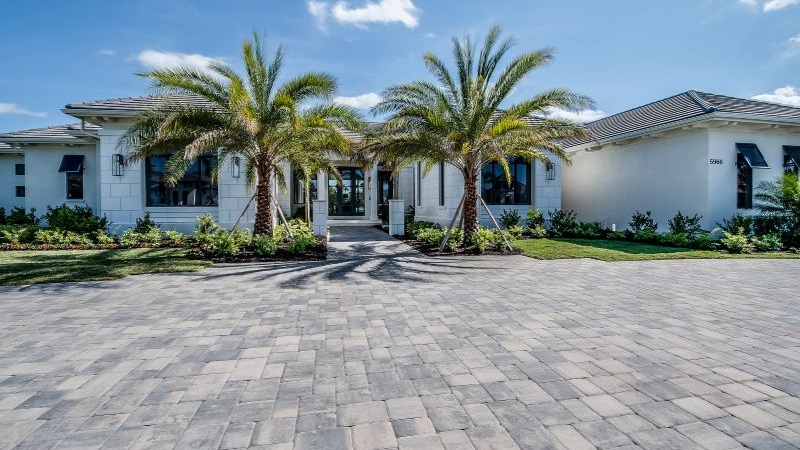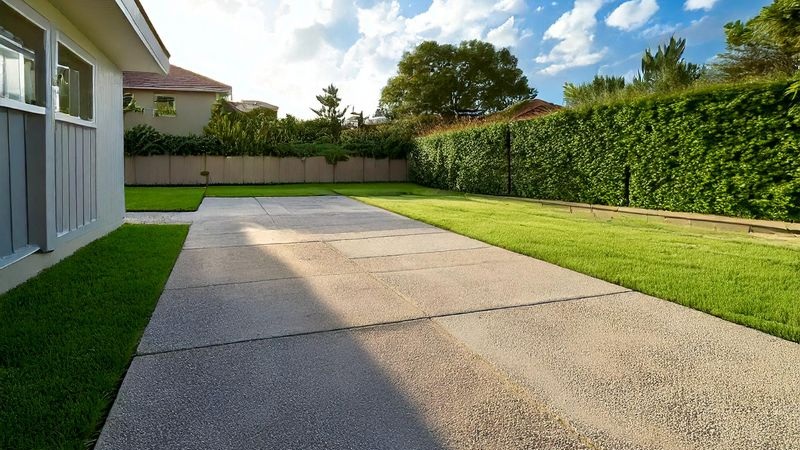What changes does the ordinance make?It updates environmental and zoning rules, improves building standards for drainage and paved surfaces, and raises the bar for how stormwater systems are designed and maintained.
What kinds of projects does this ordinance apply to?The ordinance applies to any of the following projects for which an application is submitted after March 31, 2025:
- New construction projects
- Major renovations or redevelopment
- Stormwater systems operated by cities, special districts, HOAs, or private owners that connect to public drainage systems
What’s changing with home paving projects?If you live in an unincorporated area of Miami-Dade County and want to add or expand paving (like driveways or patios) on a single-family or duplex property, you’ll now need a permit. This helps prevent stormwater runoff issues and protects your neighbors from flooding.
Will this apply to everyone or just big developments?It applies to both public and private properties, including individual lots. That means everyone shares the responsibility—and the benefits—of better stormwater management.
My project is already in progress. Do these rules apply to me?Projects with building permits already in progress before March 31, 2025, can continue under the old rules.
How will this ordinance help protect my home or property?The new rules aim to reduce flooding and improve water quality. Whether you're building something new or updating an existing property, the improvements will make your home or business more resilient over time.
How does this help with flooding in the whole community?Entities that manage stormwater—like cities or homeowner associations—will now need to
upgrade and maintain their systems. That means better overall protection from floods, especially in rainy or stormy seasons.
Will this improve water quality too? Yes. When stormwater systems work properly, they help filter out pollution before it reaches Biscayne Bay or other waterways. That means
cleaner water and a healthier environment for everyone.
What’s the big picture benefit for residents? You get:
- Less flooding on streets and properties
- Cleaner water flowing into the Biscayne Bay
- More durable neighborhoods and infrastructure
- Higher property value through better environmental resilience
Are there new rules for properties with stormwater systems?Yes. Before you make any changes—like building, improving, or altering land that has stormwater infrastructure—you’ll need County approval. This helps ensure systems are not damaged or made less effective.
Can the County intervene if a property causes flooding?Absolutely. The County has the right to investigate and address properties that are causing flooding to neighboring areas or public streets.
Will stormwater systems be inspected or certified?Yes. Systems that drain into public roads must be certified, and if any problems are found, there must be a plan with clear deadlines to fix them.
What are the new flood control and water quality standards?Miami-Dade County is raising the bar by:
- Using updated rainfall and sea level data for designs
- Requiring more stormwater retention on-site (to keep runoff from flooding other areas)
- Setting minimum pollution reduction standards for water runoff
- Encouraging green infrastructure like swales, pervious pavers, and eco-friendly drainage
Are there any rules for construction sites? Yes. Builders must:
- Control erosion and sediment
- Avoid letting dirty water or debris get into storm drains or waterways
- Use best management practices proven to reduce water pollution
Are there changes to building height rules? Yes. Building height will now be measured from the
base flood elevation (a height based on flood risks), instead of from the average elevation of the lot.
Will there be tougher penalties for violations?Yes. The County is updating fines for breaking these new rules to make enforcement stronger and more consistent.
What changes were already made before this ordinance?In 2022, Miami-Dade County adopted a
Flood Criteria Map, which requires land to be raised or shaped to match the elevation of the roads in front of the property. This helps prevent runoff from flooding neighboring areas.
What’s changing in the code with this new ordinance?Chapters 24 and 33 of the County Code now provide clearer and more specific rules for:
- Drainage
- Paved (impervious) areas
- Stormwater systems
These rules ensure that new projects and existing systems don't negatively affect neighbors or nearby roads.
Why is this happening now?To prevent future flooding, protect Biscayne Bay’s health, and keep up with rising sea levels. Miami-Dade County worked closely with cities, engineers, and residents to shape the ordinance over the past year. For more information on this ordinance if you reside within a city/municipality, continue reading below.
OUTSIDE MIAMI-DADE COUNTY JURISDICTION
What if I live in a city or municipality within Miami-Dade?Cities can make and enforce their own rules for paving, but their standards must be just as strong—or stronger—than the County’s rules.
Can local cities/municipalities still review home improvement projects?Yes. Cities/Municipalities can continue to review and approve non-structural changes (like driveways or patios) for single-family homes and duplexes without additional county review, if they met certain deadlines:
- By Dec 31, 2024: Notify the County they plan to submit a review ordinance
- By Dec 31, 2025: Submit the adopted ordinance for County review
What must cities and other entities do about their stormwater systems?Entities that own or operate stormwater systems connecting to public roads must:
- By Dec 31, 2026: Submit records of their systems and maintenance plans
- By Mar 31, 2028: Submit documents for official certification of their stormwater system
Afterward, they’ll need to recertify every 10 years
What do cities and public agencies need to do for their stormwater systems?Cities and other public entities that manage stormwater systems must:
- Report their system assets (like drains and pipes)
- Submit maintenance records
- Share their inspection and upkeep procedures





